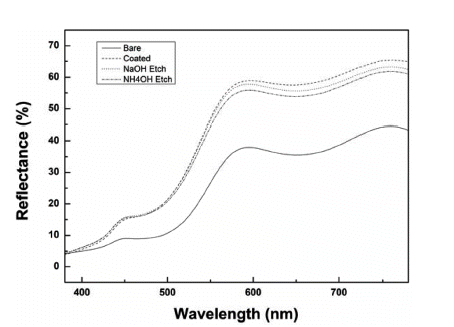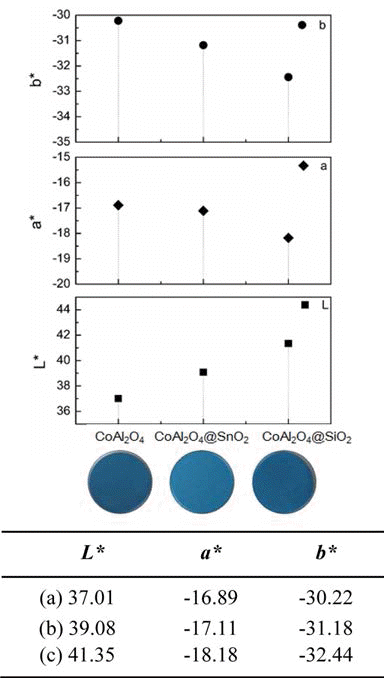- [English]
- Study of Fabrication and Improvement of Mechanical Properties of Mg-based Inorganic Fiber using Reflux Process and Silica Coating
-
Ri Yu, YooJin Kim
-
J Korean Powder Metall Inst. 2019;26(3):195-200. Published online June 1, 2019
-
DOI: https://doi.org/10.4150/KPMI.2019.26.3.195
-
-
776
View
-
2
Download
-
3
Citations
-
 Abstract Abstract
 PDF PDF
Whisker-type magnesium hydroxide sulfate hydrate (5Mg(OH)2·MgSO4·3H2O, abbreviated 513 MHSH), is used in filler and flame-retardant composites based on its hydrate phase and its ability to undergo endothermic dehydration in fire conditions, respectively. In general, the length of whiskers is determined according to various synthetic conditions in a hydrothermal reaction with high temperature (~180°C). In this work, high-quality 513 MHSH whiskers are synthesized by controlling the concentration of the raw material in ambient conditions without high pressure. Particularly, the concentration of the starting material is closely related to the length, width, and purity of MHSH. In addition, a ceramic-coating system is adopted to enhance the mechanical properties and thermal stability of the MHSH whiskers. The physical properties of the silica-coated MHSH are characterized by an abrasion test, thermogravimetric analysis, and transmission electron microscopy. -
Citations
Citations to this article as recorded by  - Effect of sulfate ion on synthesis of 5 Mg(OH)2·MgSO4·3H2O whiskers using non-hydrothermal method with acid catalyst
Areum Choi, Nuri Oh, YooJin Kim
Journal of the Korean Ceramic Society.2022; 59(2): 224. CrossRef - Study of SiO2 coating and carboxylic surface-modification on Mg-based inorganic fiber by one-step reflux reaction
Minsol Park, Areum Choi, Seiki Kim, Wooyoung Shim, YooJin Kim
Journal of the Korean Ceramic Society.2022; 59(6): 869. CrossRef - Effect of H2SO4 and Reaction Time on Synthesis of 5Mg(OH)2∙MgSO4∙3H2O Whiskers using Hydrothermal Reaction
Areum Choi, Nuri Oh, YooJin Kim
Journal of Korean Powder Metallurgy Institute.2020; 27(5): 401. CrossRef
- [Korean]
- Study of Color Evolution by Silica Coating and Etching based Morphological Control of α-FeOOH
-
NaRi Lee, Ri Yu, YooJin Kim
-
J Korean Powder Metall Inst. 2018;25(5):379-383. Published online October 1, 2018
-
DOI: https://doi.org/10.4150/KPMI.2018.25.5.379
-
-
899
View
-
3
Download
-
1
Citations
-
 Abstract Abstract
 PDF PDF
Silica is used in shell materials to minimize oxidation and aggregation of nanoparticles. Particularly, porous silica has gained attention because of its performance in adsorption, catalysis, and medical applications. In this study, to investigate the effect of the density of the silica coating layer on the color of the pigment, we arbitrarily change the structure of a silica layer using an etchant. We use NaOH or NH4OH to etch the silica coating layer. First, we synthesize α-FeOOH for a length of 400 nm and coat it with TEOS to fabricate particles with a 50 nm coating layer. The coating thickness is then adjusted to 30–40 nm by etching the silica layer for 5 h. Four different shapes of α-FeOOH with different colors are measured using UV–vis light. From the color changes of the four different shapes of α-FeOOH features during coating or etching, the L* value is observed to increase and brighten the overall color, and the b* value increases to impart a clear yellow color to the pigment. The brightest yellow color was that coated with silica; if the sample is etched with NaOH or NH4OH, the b* value can be controlled to study the yellow colors. -
Citations
Citations to this article as recorded by  - Trend of Ceramic Nano Pigments
Ri Yu, YooJin Kim
Ceramist.2019; 22(3): 256. CrossRef
- [Korean]
- Preparation and Characterization of Visible Light-Sensitive N-doped TiO2 Using a Sol-gel Method
-
NaRi Lee, Ri Yu, Tae Kwan Kim, Jae-Hwan Pee, YooJin Kim
-
J Korean Powder Metall Inst. 2017;24(6):477-482. Published online December 1, 2017
-
DOI: https://doi.org/10.4150/KPMI.2017.24.6.477
-
-
 Abstract Abstract
 PDF PDF
Nitrogen-doped titanium dioxide (N-doped TiO2) is attracting continuously increasing attention as a material for environmental photocatalysis. The N-atoms can occupy both interstitial and substitutional positions in the solid, with some evidence of a preference for interstitial sites. In this study, N-doped TiO2 is prepared by the sol–gel method using NH4OH and NH4Cl as N ion doping agents, and the physical and photocatalytic properties with changes in the synthesis temperature and amount of agent are analyzed. The photocatalytic activities of the N-doped TiO2 samples are evaluated based on the decomposition of methylene blue (MB) under visible-light irradiation. The addition of 5 wt% NH4Cl produces the best physical properties. As per the UV-vis analysis results, the N-doped TiO2 exhibits a higher visible-light activity than the undoped TiO2. The wavelength of the N-doped TiO2 shifts to the visible-light region up to 412 nm. In addition, this sample shows MB removal of approximately 81%, with the whiteness increasing to +97 when the synthesis temperature is 600oC. The coloration and phase structure of the N-doped TiO2 are characterized in detail using UV-vis, CIE Lab color parameter measurements, and powder X-ray diffraction (XRD).
- [Korean]
- Synthesis and Characterization of Brilliant Yellow Color Pigments using α-FeOOH Nanorods
-
JiYeon Yun, Ri Yu, YooJin Kim
-
J Korean Powder Metall Inst. 2016;23(6):453-457. Published online December 1, 2016
-
DOI: https://doi.org/10.4150/KPMI.2016.23.6.453
-
-
 Abstract Abstract
 PDF PDF
In this work, we synthesize brilliant yellow color α-FeOOH by controlling the rod length and core-shell structure. The characteristics of α-FeOOH nanorods are controlled by the reaction conditions. In particular, the length of the α-FeOOH rods depends on the concentration of the raw materials, such as the alkali solution. The length of the nanorods is adjusted from 68 nm to 1435 nm. Their yellowness gradually increases, with the highest b* value of 57 based on the International Commission on Illumination (CIE) Lab system, by controlling the nanorod length. A high quality yellow color is obtained after formation of a silica coating on the α-FeOOH structure. The morphology and the coloration of the nal products are investigated in detail by X-ray diffraction, scanning electron microscopy, UV-vis spectroscopy, and the CIE Lab color parameter measurements.
- [Korean]
- Coloration Study of Red/Yellow β-FeOOH Nanorod using NH4OH Solution
-
Ri Yu, IllJoo Kim, JiYeon Yun, Eun-Young Choi, Jae-Hwan Pee, YooJin Kim
-
J Korean Powder Metall Inst. 2016;23(5):343-347. Published online October 1, 2016
-
DOI: https://doi.org/10.4150/KPMI.2016.23.5.343
-
-
 Abstract Abstract
 PDF PDF
Fe-based pigments have attracted much interest owing to their eco-friendliness. In particular, the color of nanosized pigments can be tuned by controlling their size and morphology. This study reports on the effect of length on the coloration of β-FeOOH pigments prepared using an NH4OH solution. First, rod-type β-FeOOH is prepared by the hydrolysis of FeCl3·6H2O and NH4OH. When the amount of NH4OH is increased, the length of the rods decreases. Thus, the length of the nanorods can be adjusted from 10 nm to 300 nm. The color of β-FeOOH changes from orangered to yellow depending on the length of β-FeOOH. The color and phase structure of β-FeOOH is characterized by UVvis spectroscopy, CIE Lab color parameter measurements, transmission electron microscopy (TEM), scanning electron microscopy (SEM), and powder X-ray diffraction (XRD).
- [Korean]
- Coloration and Chemical Stability of SiO2 and SnO2 Coated Blue CoAl2O4 Pigment
-
JiYeon Yun, Ri Yu, Jae-Hwan Pee, YooJin Kim
-
J Korean Powder Metall Inst. 2014;21(5):377-381. Published online October 1, 2014
-
DOI: https://doi.org/10.4150/KPMI.2014.21.5.377
-
-
 Abstract Abstract
 PDF PDF
This work describes the coloration, chemical stability of SiO2 and SnO2-coated blue CoAl2O4 pigment. The CoAl2O4, raw materials, were synthesized by a co-precipitation method and coated with silica (SiO2) and tin oxide (SnO2) using sol-gel method, respectively. To study phase and coloration of CoAl2O4, we prepared nano sized CoAl2O4 pigments which were coated SiO2 and SnO2 using tetraethylorthosilicate, Na2SiO3 and Na2SnO3 as a coating material. To determine the stability of the coated samples and their colloidal solutions under acidic and basic conditions, colloidal nanoparticle solutions with various pH values were prepared and monitored over time. Blue CoAl2O4 solutions were tuned yellow color under all acidic/basic conditions. On the other hand, the chemical stability of SiO2 and SnO2-coated CoAl2O4 solution were improved when all samples pH values, respectively. Phase stability under acidic/basic condition of the core-shell type CoAl2O4 powders were characterized by transmission electron microscope, X-ray diffraction, CIE L*a*b* color parameter measurements.
|











